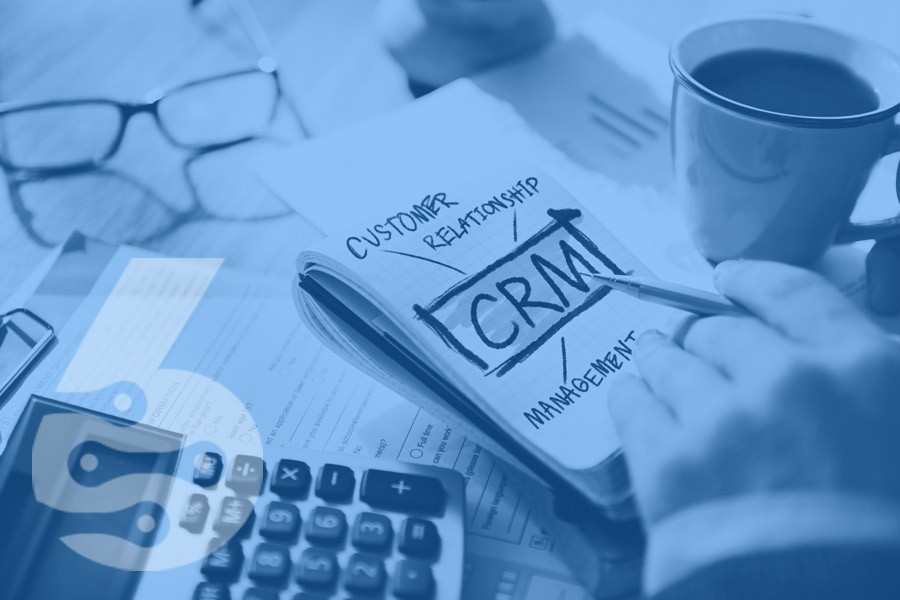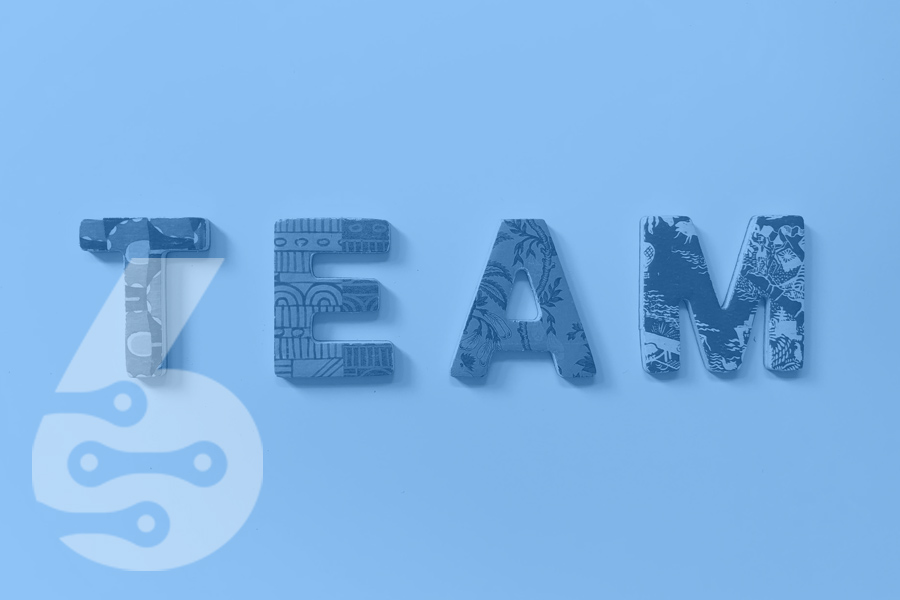- CRM
- 15.07.2022
The Beginner’s Guide to CRMs: How to Use a CRM for Your Business
Manage your Customer Relationships like a Pro!
Dr. Andreas Maier
15.07.2022
“ Always remember you are there to help your potential customers and to make their lives better. Not the other way around. “
A CRM, or Customer Relationship Manager, is software that helps businesses manage and organize customer data. But that's just the beginning – a CRM can also help businesses automate tasks, track leads and sales opportunities, and more. In short, a CRM is one of the biggest untapped potentials for businesses today.
If you're not using a CRM yet or using one but not getting the most out of it, this guide is for you. We'll show you how to use a CRM to its full potential.
What is CRM - What does it mean?
A CRM allows businesses to track customer interactions and sales and marketing data. A CRM can help businesses improve customer service by providing a view of all customer interactions, past and present. It can also help businesses increase sales by providing a way to track leads and manage customer data.
Benefits of using a CRM
Here are some key reasons why your business should be using one:
- Better Customer Insights
Using a CRM can help you get to know your customers better and make more informed decisions about your marketing and sales strategies.
With a CRM, you can track customer interactions and collect data over time. This gives you a better understanding of your customers' needs and wants, which you can use to create more relevant and targeted offers.
In addition, CRMs can help you track and manage customer loyalty programs. This way, you can further increase customer lifetime value and keep them returning for more. - More efficient lead management
A CRM can help with more efficient lead management in a few ways. First, it can help you track and follow up with leads more easily. You can create a database of all your leads, including contact information, what stage of the sales process they are in, and any other notes you want to remember. This will make it easy to keep track of your leads and make sure you follow up with them promptly.
Second, a CRM can help you score your leads. This means you can prioritize your follow-ups based on how likely a lead is to convert into a paying customer. This can save you a lot of time and energy in the long run because you'll be able to focus your efforts on the leads that are most likely to turn into sales.
Third, a CRM can help you automate your lead management process. For example, you can set up email drip campaigns to automatically send follow-up emails to your leads after they sign up for your newsletter or fill out a contact form on your website. This can help you stay in touch with your leads without much extra work. - Higher Productivity
CRMs can help salespeople be more productive by tracking their progress and providing them with relevant sales data. With a CRM, sales representatives can see what leads they have contacted, what deals are in progress, and what products have been sold. This information is compiled in an easily accessible format, so sales representatives can spend less time tracking their progress and more time selling.
Some CRMs also have features that automate repetitive tasks, such as sending follow-up emails or scheduling appointments. This can free up more time for sales representatives to sell rather than perform administrative tasks. - Increased Collaboration - Better sales and marketing coordination
A CRM system can help improve alignment between sales and marketing teams by providing better customer data and insights. With a shared understanding of customer history and preferences, these teams can work together more effectively to create coordinated campaigns that generate more leads and close more sales. Additionally, a CRM can help keep everyone on the same page by providing consolidated views of customer data and activity. - Better Customer Experience and customer service
A CRM system can help businesses improve their customer service and the overall customer experience in a few ways. First, a CRM can help businesses track customer interactions and collect data over time. This gives businesses a better understanding of their customers' needs and wants, which they can use to create more relevant and targeted offers. In addition, CRMs can help businesses track and manage customer loyalty programs. This way, businesses can increase customer lifetime value and keep returning for more. - Better data oversight and retention
When it comes to data, a CRM can be a powerful ally. Used correctly, a CRM will give you an overview of your customer base that would otherwise be impossible to obtain. This data can then be used to make informed decisions about better serving your customers. Additionally, a CRM will help to retain customers and the customer data even when salespeople leave, as customer data is stored in one central location. - More effective customer retention
One of the most important benefits of a CRM system is that it can help businesses retain customers. With a CRM, businesses can track customer interactions and collect data over time. This gives businesses a better understanding of their customers' needs and wants, which they can use to create more relevant and targeted offers.
From Chaos to Clarity – SIX ERP is the Equation for Success.
Important Terms when using a CRM
To get the most out of a CRM, it's important to understand its key terms. Below are some of the most important terms to know when using a CRM.
Lead
A lead is someone who might want to buy what you're selling. Leads can also be called Potential Customers. They might have filled out a form on your website or subscribed to your newsletter.
Contact
A contact is a record of a person in your CRM. You can store their information in a CRM system to keep track of all your interactions with them.
Deal
A deal is a record of a sale in your CRM system. You can store all the sales information in your CRM. Such information can include: what was sold, to whom it was sold, and how much money was made. This way, you can track all your sales and see how your business performs.
Company
A company is a record for a Business. You can store all the information about the company in your CRM, like what it sells, to whom it sells it, who the contact persons are, and how much money was made with this company.
Deal Stage
A deal stage is a record of where in the sales process a deal is. This can help you track how your business is doing and see what deals are close to being finished. Typical deal stages are "lead", "contact", "negotiation", and "closed".
Task
A task is a record of something you need to do. This can be anything from calling a client to sending an email. You can set deadlines and reminders for yourself, so you don't forget anything.
Note
A note records anything you want to remember about a contact, deal, or company. This can be anything from meeting them to something they said you found interesting.
Product
A product is a record of what your company sells. You can store all the information about the product in your CRM system, like what it is, how much it costs, and what features it has. This way, you can keep track of all the products you sell and see how your business is doing.
Pipeline
A pipeline is a list of all the deals that your company is working on. This can help you track the performance and give you an overview of potential future sales and their probabilities.
How to Use a CRM
If you're starting with a CRM, here are some easy steps to get started:
- Setup your company and customize the system
When you start with a CRM, it's important to set up your company information and customize the system to match your business needs. This will help you get the most out of your CRM and make tracking your sales and customer data easier.
To get started, you'll need to create a company profile and add your company's logo, contact information, and other important details. Once you've done this, you can start customizing your CRM by adding fields, setting up workflows, and configuring your preferences. - Add your team and salesforce
Adding your team to the CRM is the next step in getting started with your CRM. This will allow you to track your sales pipeline and data and collaborate with your team members.
You'll need to create user profiles and add your team members' contact information to add your team. You can also assign roles and permissions to control what each team member can see and do in the CRM. Once you've added your team, you can start adding your salesforce. This will allow you to track your leads and customers, as well as their contact information and purchase history.
You can also add notes and files to each salesforce to keep track of your sales conversations and progress. - Import contacts, companies, and deals
Importing your current contacts, companies, and deals is the next step in getting started with your CRM. This will allow you to track your sales pipeline and data and collaborate with your team members.
You'll need to create a CSV file with your contact information to import your contacts. You can then import this file into the CRM and add your contacts' details, such as their names, email addresses, phone numbers, and company names. - Setup your dashboard
Once you've added your team and salesforce to the CRM, you'll want to set up your dashboard. This will give you a better overview of your sales data and allow you to see the right information at a glance.
To set up your dashboard, you'll need to configure your widgets and filters. You can then choose which widgets you want to display and how often you want them to update. Once you've configured your dashboard, you can start using it to track your sales data. - Understand the reports
Understanding and setting up reports is the next step in getting started with your CRM. This will allow you to track your sales data and progress and identify any areas that need improvement.
To set up your reports, you'll need to configure your filters and choose the right metrics to track. You can then view your reports in the CRM or export them to Excel for further analysis. Once you've set up your reports, you can start using them to track your sales data and progress. - Integrate other tools (optional)
Integrating your CRM with other tools can be a great way to get better data and connections. By integrating your CRM with other tools, such as your email marketing or social media tool, you can better understand your customers and their buying behavior.
This can be a great way to improve your marketing efforts and target your customers more effectively. However, it's important to note that not all CRMs offer this option, so you'll need to check with your CRM provider before integrating it with other tools.
CRM vs. ERP
A CRM (customer relationship management) system only helps businesses manage their customer data. In contrast, an ERP (enterprise resource planning) system helps businesses manage their operations, including CRM, Warehousing, Accounting, and more.
Both systems offer a range of features and benefits that can help businesses run more effectively. However, an ERP system is the better choice if you're interested in expanding your business or need a tool to help you run your operations more effectively. Our ERP solution offers a wide range of features and functionality that can help you run your business more effectively and adds more transparency to your company's operations.
SIX ERP is the right choice if you're looking for a more comprehensive system to help you manage your business operations. Our system offers a wide range of features and functionality that can help you run your business more effectively and provide more transparency into your company's operations. In addition, our ERP solution costs less than most CRM systems on the market today.
So if you're looking for an affordable and comprehensive ERP system to replace your CRM, then SIX ERP is the right choice.
About the author
Andreas Maier is a results-driven CEO with nearly 30 years of experience in ERP, digital transformation, and IT consulting. He has held leadership positions in Fortune 100 companies such as rentalcars.com (PCLN) and Intrasoft International, a leading EU-based R&D software vendor. With a Ph.D. in Neural Networks from the University of Cologne, Andreas combines deep technical expertise with a strategic approach to business process optimization.
As the founder and co-founder of multiple successful startups, including XXL Cloud Inc., eShopLeasing Ltd, and WDS Consulting SA, his expertise lies in ERP consulting, IT strategy, and process automation. His work is focused on helping businesses implement scalable ERP solutions, streamline operations, and drive digital transformation.
Related articles

10 key features SMEs should look for in a modern ERP software
SMEs are the backbone of the economy. SMEs account for 99.7% of businesses in regions like Europe and the U.S. and employ over 60% of the workforce. But even though...
Human Resource Management in ERPs
Human Resource Management (HRM) is a process of managing people in organizations. In the traditional sense, HRM functions included recruitment, selection, training, and compensation. However, in the modern era, the...



